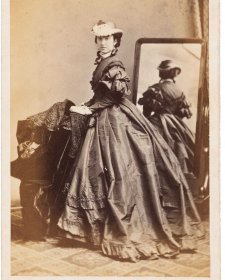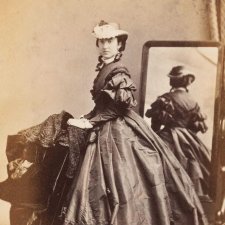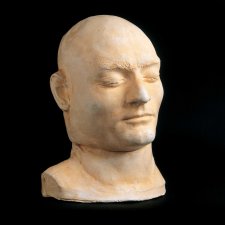Temporary road closures will block vehicle access to our building on Sunday 13 April until 3:00pm.
Dublin-born operatic impresario, William Saurin Lyster (1828-1880), is credited with the ‘regular establishment of opera as one of the public entertainments of colonial life in Australia’. Lyster arrived in Australia with his company in 1861, opening at Melbourne’s Theatre Royal with Lucia di Lammermoor, Maritana and Lurline. Despite good reviews the initial season ran at a loss. Lyster persisted however, touring to Sydney to build upon his growing popularity. Following success there, the company returned to Melbourne to establish their base and in so doing established Melbourne as the country’s opera capital. With some thirty operas in their repertoire, Lyster’s Opera Company was said to have given over 1300 performances, touring the colonies and New Zealand for eight years, after which the company disbanded. Lyster returned to Australia in 1870 following a brief stint in Europe where he purchased music scores and the latest technical equipment to stage his productions. He leased Melbourne’s Princess Theatre and engaged Italian and English companies in alternating seasons of operas sung in Italian and English, the latter proving more profitable. Though Lyster himself was not a musician he had a penchant for Italian opera and knew well the public taste, the press describing him as ‘a liberal, pushing, energetic business man, personally liked… and possessed of that valuable quality, tact.’ His intimate knowledge of the opera and his business acumen succeeded in providing Australia’s general populace with world-class operatic performances.
English photographer William Davies had arrived in Melbourne by 1855. He is said to have worked with his friend Walter Woodbury and for the local outpost of the New York firm Meade Brothers before establishing his own business in 1858. By the middle of 1862, ‘Davies & Co’ had rooms at 91 and 94 Bourke Street, from where patrons could procure ‘CARTE de VISITE and ALBUM PORTRAITS, in superior style’. Like several of his contemporaries and competitors, Davies appears to have made the most of his location ‘opposite the Theatre Royal’, subjects of Davies & Co cartes de visite including leading actors such as Barry Sullivan and Gustavus Vaughan Brooke, and comedian Harry Rickards. Examples of the firm’s work – portraits and views – were included in the 1861 Victorian Exhibition and the London International Exhibition of 1862; and at the 1866 Intercolonial Exhibition the firm exhibited ‘Portraits, Plain and Coloured, in Oils and Water Colours’ alongside a selection of views for which they received an honourable mention.
Collection: National Portrait Gallery
Purchased with funds provided by Graham Smith 2009
Graham Smith (18 portraits supported)



On one level The Companion talks about the most famous and frontline Australians, but on another it tells us about ourselves.



Drawn from the NPG’s burgeoning collection of cartes de visite, Carte-o-mania! celebrates the wit, style and substance of the pocket-sized portraits that were taken and collected like crazy in post-goldrush Australia.



Death masks, post-mortem drawings and other spooky and disquieting portraits... Come and see how portraits of infamous Australians were used in the 19th century.